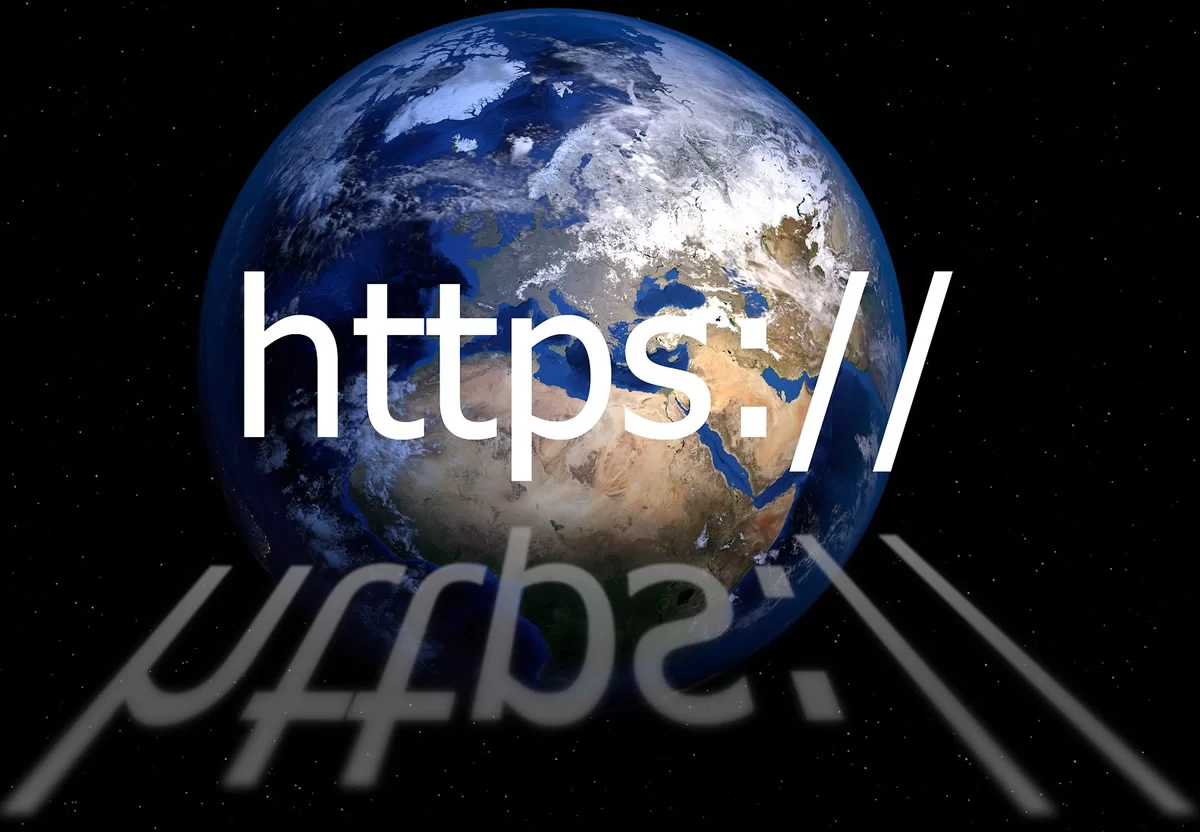HTTPS
What is HTTPS
What is HTTPS and Why You Need It On All Your Websites
The world has become digital. So what is HTTPS? With the advent of new technologies, digital marketing has also evolved to target niche markets and build brand awareness. Digital marketing is not limited to websites and blogs anymore.
It encompasses all the digital media you can find on the web: social media profiles, search engine results, apps, e-newsletters, video sites… Basically, anything that lets you target potential customers with a single message: your company’s brand profile and what it stands for.
This shift from print to digital marketing is an important one because it allows companies to reach potential consumers at their fingertips – wherever they are.
However, there’s a big difference between using a website and using a digital marketing campaign; users need to be made aware of this change in order for them to go through with it.
In this post, we’ll explore why you need an HTTPS implementation on all your websites, how to do so and which benefits you will receive in return.
Is tech making lottie’s worse?
Are you worried that technology is making Lottie animations worse? Don’t be! Let’s explore why 👇
1/ Lottie animations are vector-based animations that can be exported from Adobe After Effects. They’re lightweight, scalable, and look amazing on all devices. The technology that powers Lottie animations is constantly evolving, making them better and more efficient than ever before.
2/ With advancements in technology, Lottie animations are now supported on all major platforms, including Android, iOS, and the web. This means that your animations will look great on any device, giving your users a seamless experience across all platforms.
3/ The Lottie library is constantly expanding, with new animations being added all the time. This means that even if you don’t have the skills to create your own animations, you can still add stunning animations to your app or website with ease.
4/ Plugins like Bodymovin enable you to export Lottie animations directly from Adobe After Effects. This makes it easy for designers to create animations in their favorite design tool and export them for use in their projects.
5/ So, to answer the question – no, technology is not making Lottie animations worse. In fact, it’s making them better and more accessible than ever before. If you haven’t already, give Lottie animations a try and see the difference they can make in your projects! 🚀
So What’s HTTPS?
HTTPS is a protocol used to create secure connections and has been around since 1998. The main goal of HTTPS is to create a safe connection between you and the website you’re visiting.
What does HTTP stand for, “Hypertext Transfer Protocol”, which is the standard used to transfer data between computers. When you visit a site, your browser first makes a request to the website’s server.
HTTPS Example: What is HTTPS hypertext transfer protocol secure HTTPS. Adding an SSL to your site will give you HTTPS.
The server, then, responds by sending back all the information the browser requested. As you can see, this is a very straightforward process, but it can also be vulnerable to a number of threats, including – MITM (Man-in-the-middle) attacks.
In this case, the attacker intercepts the information from your browser and sends it to the server, who can then read, modify or delete it. – Cookies. A cookie is a small piece of data that is sent to your browser and stored on your computer.
This allows the server to recognize you when you return to the same site. The problem is that your data can be read and modified by anyone who has access to your computer.
This can lead to unwanted behaviour such as installing malware, revealing your personal information like addresses and phone numbers, etc.
To solve this, you can clear your cookies in your browser’s settings. – Phishing. Phishing is when someone pretends to be a trustworthy business or person, like your bank.
The aim is to trick you into revealing your login details and account information (username, password, credit card numbers, etc.). That way, the attacker can take what is yours, like money.

Implement On Your Website
Why you need this implementation on your website?
How HTTPS Works. When you go to a bank’s website, you don’t expect to be robbed because the site is not secure. The same goes for all the other sites you visit. The main reason you need an HTTPS implementation is because it makes all your data secure. Mutual TLS (MTLS)There are many reasons why an HTTPS implementation is a good idea, you may ask, what is https, but here are the top three answers:
– It boosts your website’s SEO. Search engine optimization is about ranking your website high in search results. With HTTPS, you can expect to see a boost in your SEO score as several factors like keywords and anchor text (the text used to link to your website) get reflected in the HTTPS version.
– It increases the trustworthiness of your brand. Being a safe place to shop online is an important part of building trust. Consumers are wary of buying from websites that are not secure because it makes them feel like their personal information is at risk.
With an HTTPS implementation, you can expect to gain trust from more consumers.
– It protects your website from hackers. HTTPS is by far the most important reason you need an implementation. It prevents hackers from accessing your website’s data when you are accessing it. This means that if an attacker tries to hack your website, they are only given a blank page.
How To Enable HTTPS For Your Website
If you want to enable HTTPS for your website, you first need to make sure that you have the right technology to support it. For example, if you use WordPress-powered websites, then you need to make sure that you’re using the latest version of the software.
If you want to implement HTTPS on your website, then you first need to determine if you want to use a paid or free solution.
– Paid solutions – A paid solution is the most reliable, especially if you want an automatic solution. The most known paid solution is Cloudflare’s 1-click HTTPS.
With this, all you need to do is purchase the plan, and you’re done. You can use Cloudflare’s free plan as well, so you can test the waters to see if this is something you want to go all-in with.
– Free solutions – A free solution is excellent for testing the waters and seeing if you like the process. The most known free solution is LetsEncrypt, and it is gaining popularity because of its ease of use.
The process is very straightforward if you have a WordPress website running on a host. First, you need to log in to the hosting dashboard and upgrade your hosting plan to support HTTPS. This will allow you to support HTTPS on your site.
What is HTTPS
One of the most important reasons you should enable HTTPS on your website is because it protects your data. When you go to a website that’s not secure, hackers can access your data. That’s because the website is just a conduit into your computer.
With HTTPS enabled, you can expect a number of benefits, mainly because it secures your data, boosts your SEO and makes your site more trustworthy:
– Better security: HTTPS secures your data from hackers and anyone who wants to access your computer. This way, no one can access your computer without your permission.
– Better privacy: With HTTPS enabled, you have an added layer of protection against third-party tracking. That way, no one can see what pages you’ve visited and what information you’ve sent to the site.
– Better SEO: Since HTTPS is a better version of HTTP, it has a better chance of ranking in search engine results. This is especially true if you’re targeting a niche market or a specific audience.
– Better user experience: Being a better version of standard HTTP, HTTPS makes your website’s pages load faster. This means a better user experience for your visitors, who will appreciate the faster load time.
Here is an in-depth post about HTTPS on the Cloudflare website.

The Importance Of SSL
HTTPS For your online business
Google Chrome, Mozilla Firefox, and other popular browsers now alert users when they visit an unsecured website. Sites that do not use HTTPS as their protocol display a clear red warning and Trust mark. Users become wary of giving their personal information to websites with such unsecured connections.
Lets explore the importance of SSL and HTTPS for businesses, how it works, why it is important and what are some best practices to implement in your business.
SSL stands for “Secure Sockets Layer” and is a cryptographic protocol that enables the secure communication between clients and servers. HTTPS is an HTTP (Hypertext Transfer Protocol) with an added layer of security using SSL.
HTTPS is the default communication protocol for all eCommerce sites, online banking, and other highly sensitive websites. SSL is a cryptographic method of securing data in transit between two computers over the internet.
It is used to transmit data between a web server and a browser and is responsible for validating the identity of the server, encrypting data and ensuring its integrity.
Why Is It Important For Business?
HTTPS is a protocol that provides end-to-end encryption to protect the integrity of data in transit between users and a web server. This is often used as a substitute to HTTP over SSL. To see the difference between HTTP and HTTPS, let’s see what happens when you are on an HTTP page:
You enter the URL of the page you want to visit in your browser’s address bar and hit enter.
The browser connects to the server hosting the page through the internet and sends a request to the server. – The server receives the request and transfers the data to the browser.
The browser then renders the data as a webpage. The browser then connects to another server hosting the website’s assets such as images, CSS, JavaScript etc. The browser then displays those assets on the webpage.
HTTPS Page
Now, let’s see what happens when you are on an HTTPS page
You enter the URL of the page you want to visit in your browser’s address bar and hit enter. The browser connects to the server hosting the page through the internet and sends a request to the server.
The server receives the request and transfers the data to the browser, encrypting it using a public key. – The browser then renders the data as a webpage, unaware of what the data is.
The browser then connects to another server hosting the website’s assets such as images, CSS, JavaScript etc. The browser then displays those assets on the webpage, unaware of what the data is.
Check out the best deals on SSL at Techradar here; https://www.techradar.com/news/best-ssl-certificate-provider
How Does SSL Work
What is SSL? – SSL and HTTPS rely on Public Key Infrastructure (PKI) technology to validate the server’s identity and create a secure communication channel between the client and server. A server that uses an SSL certificate to encrypt data uses a private key to decrypt them.
The private key is kept on the server and the public key is copied to a Certificate Authority (CA). When a browser connects to an SSL server, it validates the server’s identity by comparing its public key against the CA’s public key.
If they match, the browser displays a green padlock and a “Secure” message. The browser also creates a secure session with the server, storing the server’s identity and session ID in the browser’s “Secure Cookie”.
5 Best Practices For SSL And HTTPS
Here are some best practices that will help you to implement SSL and HTTPS in your business.
Install an SSL certificate
An SSL certificate is a document used for the verification of the ownership of a website. An SSL certificate is used to encrypt the data passing between a browser and a server.
This protects the data from malicious attacks and data theft. An SSL certificate is issued by a trusted CA that validates the identity of the owner of the website. The CA verifies the website’s details, authenticates the owner and issues a certificate.
There are different SSL certificates available in the market – Standard SSL certificate, Extended SSL certificate, Wildcard SSL certificate and a Non-profit SSL certificate. Choose the best SSL certificate that suits your business requirements and budget.
Always use HTTPS instead of HTTP. While the difference between HTTP and HTTPS may seem subtle, but the former is not secure. There may be instances where you need to use HTTP instead of HTTPS.
Use HTTPS if you are collecting sensitive information like credit card details, login credentials, or any other information that you don’t want to be intercepted.
Use HSTS (HTTP Strict Transport Security)
HSTS (HTTP Strict Transport Security) is an HTTP header that tells browsers to always use HTTPS for the website. HSTS is important because it helps prevent Man in the Middle Attacks. When you use HSTS, browsers add a special entry in the user’s browser to always force HTTPS.
Use TLS 1.2
TLS 1.2 is the latest version of the Transport Layer Security (TLS) protocol. SSL/TLS is the cryptographic protocol that enables secure communication between clients and servers. The latest version of TLS 1.2 is more secure than the previous versions. If a browser supports TLS 1.2, SSL terminates at the browser. If a browser does not support TLS 1.2, SSL terminates at the server.
Use HASH Algorithms
When you purchase an SSL certificate, you have the option to choose the hashing algorithm for your SSL certificate. The hashing algorithms are responsible for creating digital fingerprints of data. This ensures that the data that is being encrypted is not tampered with.
You should use algorithms like SHA-2, SHA-3, and SHA-256. These algorithms are more secure and have a longer lifespan than the previous versions.
Conclusion
Digital marketing has become more sophisticated and a must-have for brands in order to compete with their competitors and stay relevant in today’s socio-economic environment.
The best way to do this is to have a solid online presence with a quality website.
HTTP vs HTTPS? No contest, you must have HTTPS in your URL to have any success online these days.
However, these days, it’s hard to gain popularity and make a significant impact in the market without an HTTPS implementation.
This is because it protects your website from hackers and ensures that your website is secure and safe to use. Google requires every website to be HTTPS enabled, meaning you need an SSL certificate on your website.
SSL and HTTPS are the two important protocols that can protect sensitive data. They are commonly used to protect online transactions and login credentials, such as usernames and passwords.
If you want to reach out to a wider audience, you must implement SSL on your website. Google has recently announced that they will be updating their algorithm to give more importance to websites that implement SSL. If a website has implemented SSL, it will be considered a trusted website.
Beforre reading this post, you may have wondered, what is https. Hopefully, by now, you understand a little more about what is https.
Our web hosting comes with free SSL, so no cost to you.
Read our post; What is SSL Certificates?
SSL Is Important For Internet Marketing
Google requires SSL on all websites that contain Google-related data, such as Google Analytics and Google AdWords. This is because Google’s servers use SSL to encrypt traffic between your site and Google’s servers. Without an SSL connection, data from your site can be intercepted and used by third parties.
If your website does not have an SSL certificate, Google can display a “not secure” warning in search results. This may reduce the number of visitors to your site or cause users to leave without completing their tasks.
You should get an SSL certificate for your website if you want to improve security and prevent people from illegally accessing and stealing your personal information.
Google also recommends that you always use HTTPS when possible so that visitors can trust the connection between your site and Google.
Google gives less preference to any website that doesn’t have an SSL certificate installed. So if you’re promoting your website with social media marketing, then you definitely need SSL.







